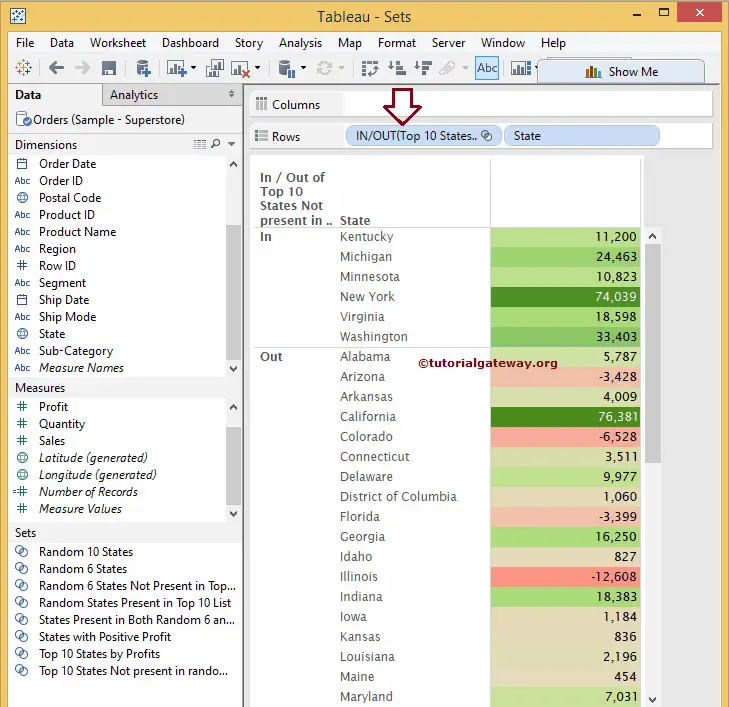The Combined Sets in Tableau are handy for comparing two existing sets for further analysis. In this article, we will show you how to Create Combined Sets with an example.
Before we start creating, we have to understand the properties present in Combined tableau sets.
For this Tableau combined sets example, we are going to use the Super Store sample Excel file downloaded from the website. Please visit Connecting to Excel Files article to understand, How to connect and extract data from an Excel file in Tableau.
Tableau Combined Sets Properties
The following screenshot will show you the window used to create a Combined Set in Tableau, and their properties are:
- Name: Specify a unique name for the set. The title should reflect the set functionality.
- Sets: Please select or change the existing Set from Drop down menu. The first set act as Left Set and the second set as a Right set
- All members in Both Sets: This option is similar to SQL Full Join. If you select this option, Tableau Combined Set holds all the members from the Left and Right Sets.
- Shared Members in Both Sets: This option is similar to SQL Inner Join. This Combined Set option holds matching members from Left Set and Right Set. It means Every record should match the condition present in the Left and Right sets.
- Left Set Except Shared Members: If you select this option, Combined Set will hold all the members from Left Set except the matching members from the Right one.
- Right Set Except for Shared Members: This option holds all the members from Right Set except matching members from Left Set.
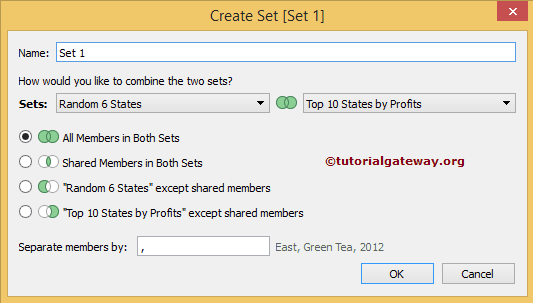
Creating Combined Tableau Sets
This Tableau example shows how to create Combined Sets. To create them, we need two sets. So, we will use the sets we created in our previous article. Please refer to the Set’s section to understand the creation of Sets.
To create Combined Tableau Sets, Please select two Sets from the Sets region, and right-click on them to open the context menu. Please select Create Combined Set… option from the context menu. In this example, we are using Random 6 States and Top 10 States By Profits, as shown below.
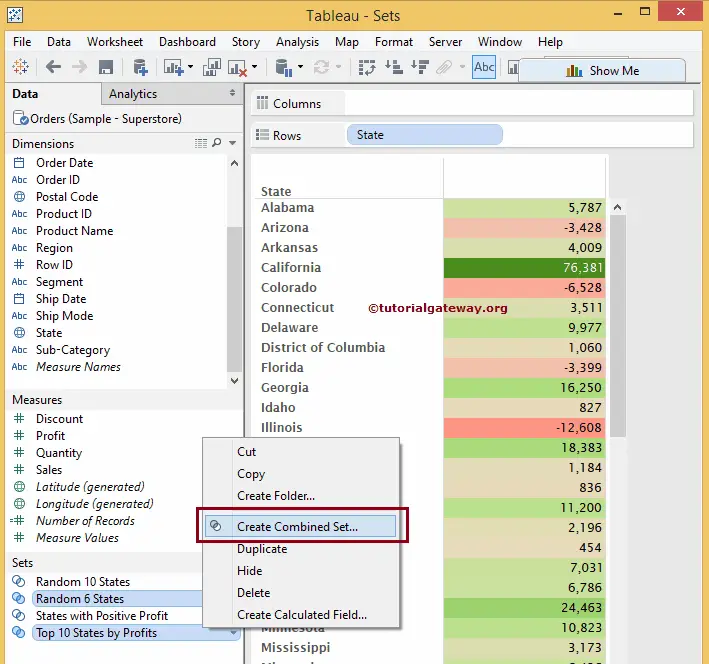
Once you select Create Combined Set… option, a new window called Create Set will be opened to configure the option.
All members in Both Sets
In this example, we are going to find the Total number of States Present in Both Random 6 and Top 10 States. To get all the records from both sets, we have to select the All Members in the Both Sets option.
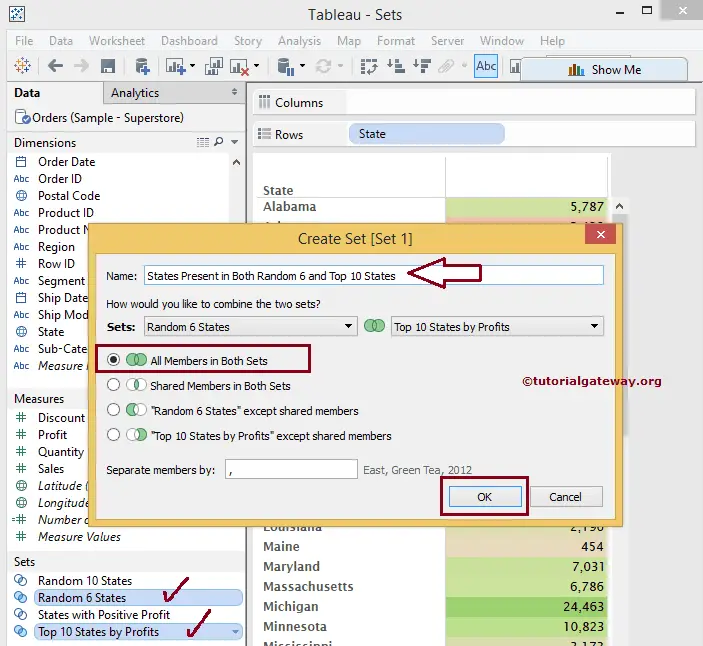
Click OK to finish Creating our first Combined tableau Sets. Next, Please Drag the newly created set (States Present in Both Random 6 and Top 10 States) from the Sets region to the Row Shelf. And place it before the State filed as shown below.
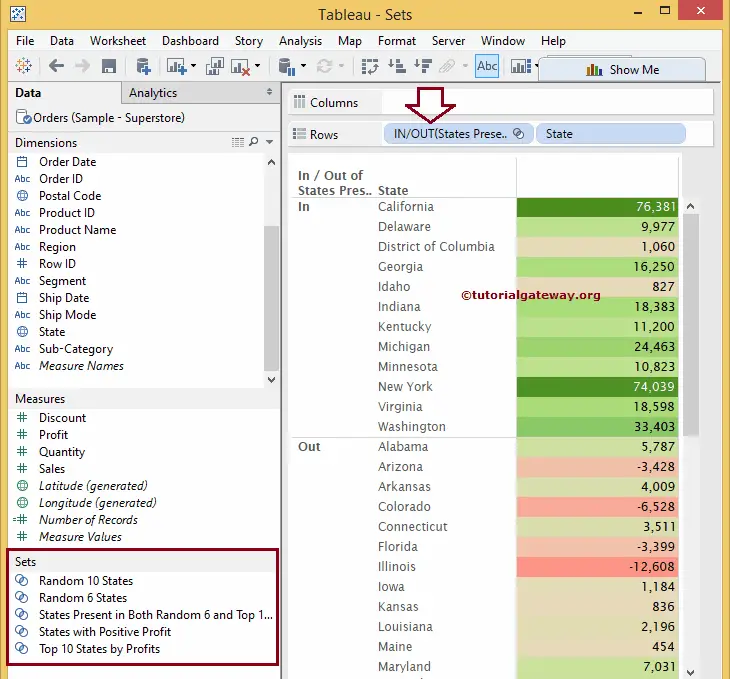
From the above listing, you can observe that the report displays 12 records in the IN section. Because there are 16 records in both Random 6 States (6) and Top 10 States By Profits (10) sets, and within that 16, there are 4 common records, it is displaying 12 records.
Shared Members in Both Sets
In this Tableau combined sets example, we are going to find the Total number of Common States Present in Random 6 States and the Top 10 States By Profits sets. To get the Common records from both sets, we have to select the Shared Members in the Both Sets option.
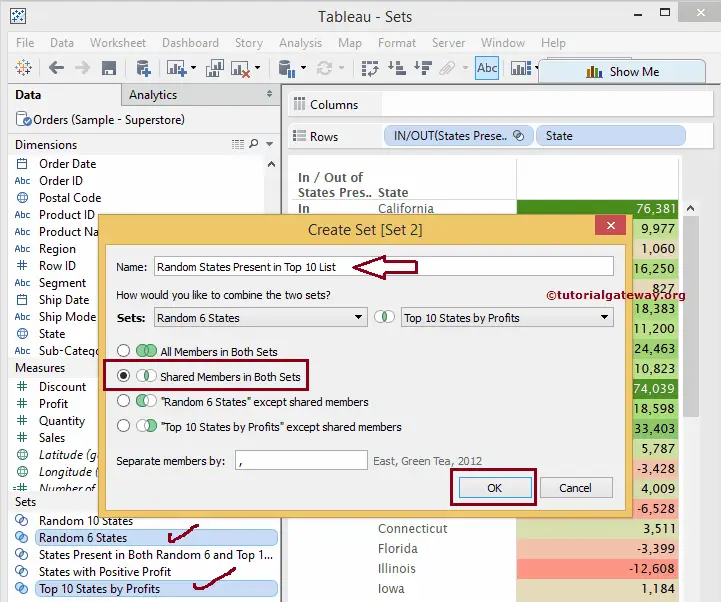
Click OK to finish creating a new Combined Set in Tableau. Let us replace the States Present in Both Random 6 and Top 10 States set with our newly created set, called Random States Present in Top 10 List, and see the result.
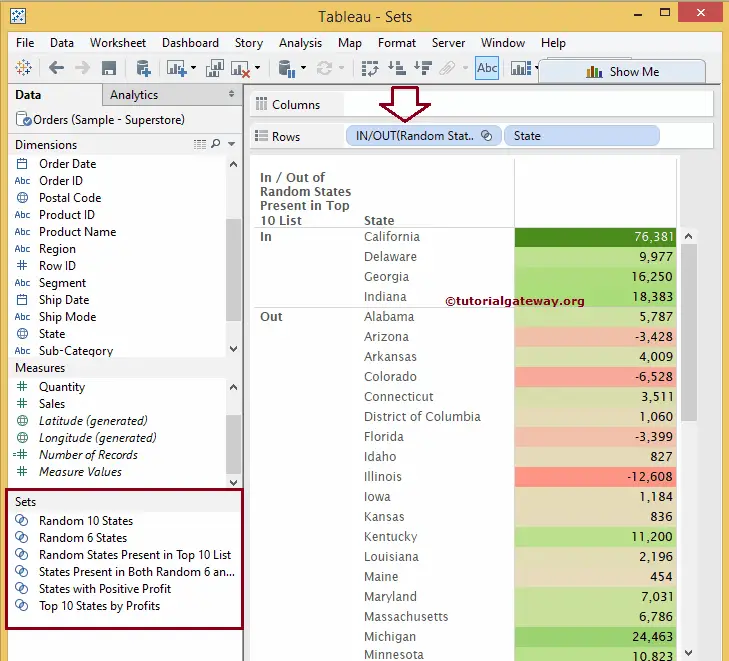
From the above listing, you can observe that California, Delaware, Georgia, and Indiana are the common fields in the Random 6 States and Top 10 States By Profits sets.
Tableau combined Sets Left Set Except Shared Members
In this Tableau combined example, we are going to find the total number of States that are Not Present in the Right Set, Which is the Top 10 States By Profits set. To get all the records from Random 6 States except the records from the Top 10 States By Profits set, we have to select the Left Set Except Shared Members option
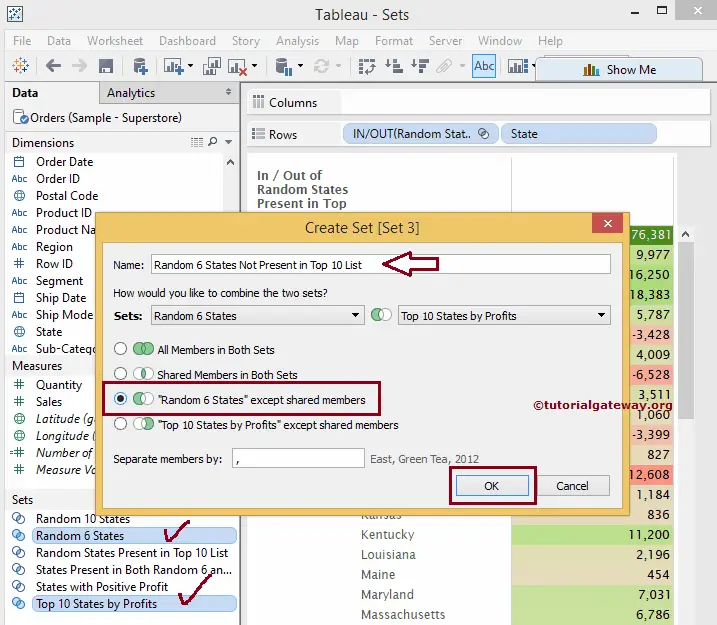
Click OK to finish creating new Combined Sets. Let us replace the Random States Present in the Top 10 List with Random 6 States not Present in the Top 10 List and see the results.
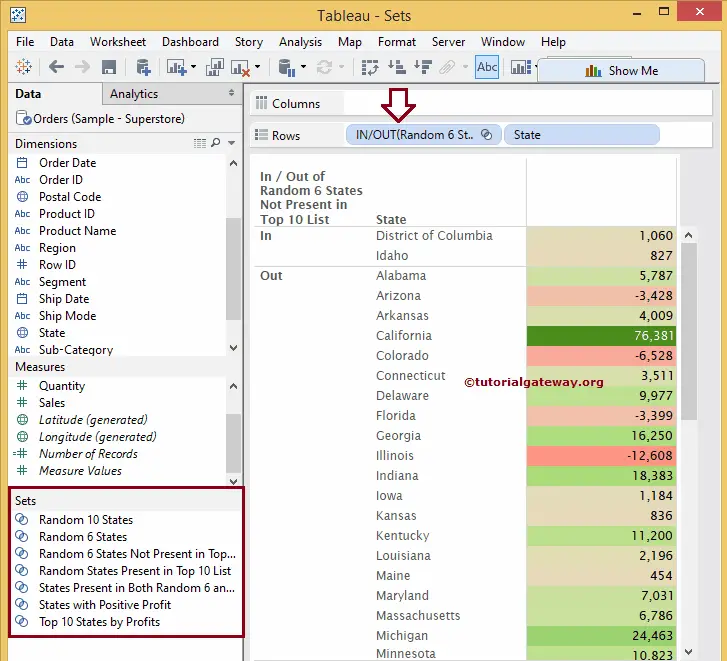
From the above listing, you can observe that the report displays two records (District of Columbia and Idaho ) in the IN section. Because there are 6 records in Random 6 States, within that 6, there are 4 common records in Random 6 States and Top 10 States By Profits sets. So it is displaying 2 records.
Right Set Except Shared Members
In this Tableau combined sets example, we will find the total number of States that are Not Present on the Left, Which are the Random 6 States set. To get the records from the Top 10 States By Profits set, except the records from Random 6 States. We have to select the Right Set Except Shared Members option.
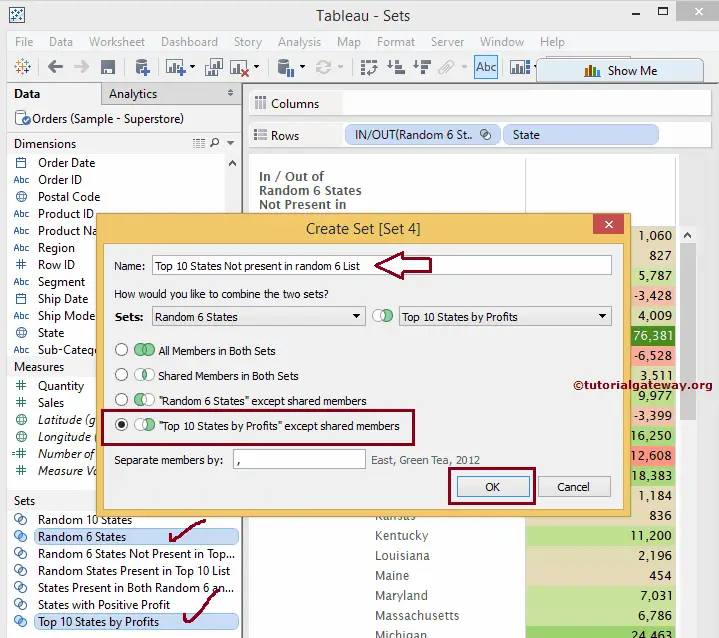
Click OK to finish creating a new Combined Set in Tableau. Let us replace the Random 6 States, not Present in the Top 10 List with our newly created set. That is the Top 10 States Not Present in the Random 6 List and see the result.
